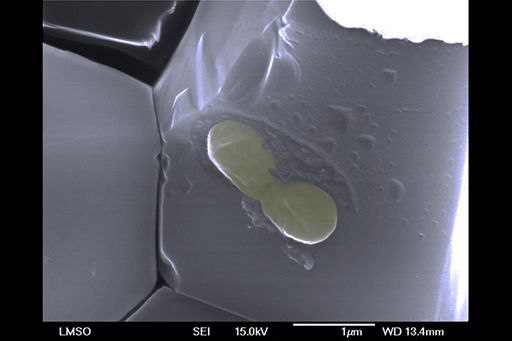2.4 Fossil molecules
The Life Marker Chip mentioned in the previous video (and which has not found a place on the ExoMars mission, but might be used on a later mission) is designed to detect specific molecules that are typically produced by life as we know it. But there are other remnants that could be distinctive.

The image is a false-colour electron microscopic image of fossilised bacteria. Finding such small structures is not yet possible with spacecraft instrumentation. We therefore rely on other methods to find them, such as detecting their chemical signatures. But with every engineering development, with every new mission, more sophisticated instrumentation is developed and Earth-based laboratory capabilities may yet become available for use on spacecraft.
What is the gold standard and final proof? If we wanted to argue convincingly that there is life on a moon today, we would have to find it. We would have to take pictures, and observe it doing all the things life does, including reproduction. We might have to settle for chemical observations first, which might help us understand what exactly it is we are looking for.
